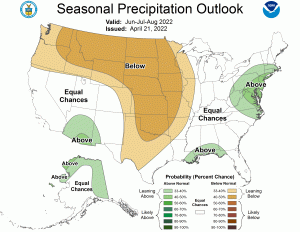
PRESS RELEASE: Mosquito Control activity begins this April
April 13, 2022
Update – Week of May 2 – Mosquito Treatments Begin; Helicopters are Active
May 5, 2022
Andrew from MMCD's Oakdale facility found the first larvae earlier this year. Cold temperatures will keep them in the water a little longer.
Cold spring temperatures will delay when people first start noticing mosquitoes in the Twin Cities
We are nearing the end of April, but it will still be a while before we see large numbers of mosquitoes thanks to the cold temperatures we've been experiencing. Mosquito larvae develop in standing water and when the water temperatures are cold, their life cycle slows down and they remain in the larval stage longer. In mid-summer when water temperatures are warmer the life cycle for a common floodwater mosquito would have them in the water for about a week - 4 to 6 days as larvae and 1 to 2 days as pupae before emerging as an adult mosquito. In a cold spring that process can take weeks.
At the Metropolitan Mosquito Control District we track days about 40 degrees Fahrenheit to get an estimate of when we can expect mosquitoes to emerge. We also use this metric to help determine when we need to begin our helicopter treatments in ponds and wetlands. While April of 2022 may seem abnormally cold, we are actually trending similar to 2020 and 2019 in degree days about 40.
Based on this estimate we will likely begin seeing mosquitoes in noticeable numbers around the end of May and early June.

Spring of 2022 is trending cooler than 2021, but similar to 2020 and 2019.
Predicting summer mosquito numbers is like predicting the weather.
 As people begin planning summer events and looking forward to the inevitable warm temperatures, we are often asked what summer mosquito numbers are expected. The most common nuisance mosquito we have in Minnesota is the Summer floodwater mosquito (Aedes vexans) which is heavily dependent on rainfall - usually an inch or more of rain will trigger a hatch of this species. This means that the best way to predict mosquito numbers for this species is to estimate the rainfall for the season.
As people begin planning summer events and looking forward to the inevitable warm temperatures, we are often asked what summer mosquito numbers are expected. The most common nuisance mosquito we have in Minnesota is the Summer floodwater mosquito (Aedes vexans) which is heavily dependent on rainfall - usually an inch or more of rain will trigger a hatch of this species. This means that the best way to predict mosquito numbers for this species is to estimate the rainfall for the season.
2021 was an unusually dry year with most of Minnesota in drought conditions throughout the summer. According to the National Weather Service and NOAA 2022 is likely to be another dry year with precipitation predicted to be below average for most of the state during June, July, and August. If this prediction holds true, we are likely to see another low year for annoyance mosquitoes.
There is one species of mosquitoes that we can predict with some accuracy thanks to a model developed by Dr. Roger Moon at the University of Minnesota. The cattail mosquito (Coquillettidia perturbans) is a unique species that overwinters as larvae by attaching to the roots of vegetation (often cattails, hence the name) and emerges in a single brood in the summer around the end of June and early July. Our entomology lab makes predictions based on previous year rainfall and adult mosquitoes captured in CO2 traps and based on the model, it is likely that 2022 will have even fewer cattail mosquitoes than 2021 did.
This means that even if we do see precipitation this year that is closer to average, we are unlikely to see a surge of mosquitoes around the 4th of July like we often do.
View the full details about cattail mosquitoes and the model that makes predictions in our Technical Advisory Board report.

Average seasonal rainfall per gauge, average number of Coquillettidia perturbans in CO2 traps, 2000-2021, and predicted amounts for 2017 and beyond.
Disease vector mosquitoes are still present in dry years.
While many indications imply that there will be fewer annoyance mosquitoes this year, it's not all good news. Even in drier years, mosquitoes that can carry harmful diseases may still be present in Minnesota. 2021 had some of the lowest overall mosquito numbers in a decade, but instances of West Nile virus were higher than in 2020 and 2019. This mosquito-borne illness is more common toward the end of the summer, so even if mosquitoes aren't as noticeable, still take precautions like wearing insect repellent and avoiding peak feeding times.
Also, be aware that ticks aren't dependent on rain and they will be present regardless of rainfall and temperatures. Our staff have already found deer ticks out in the field this year. Lyme disease transmission is most likely to occur in June when the nymph ticks are out questing - these small ticks are hard to find because they can be smaller than a freckle. Be sure to check yourself, your kids, and your pets for ticks if you're out in a wooded area even when temperatures are cool.
Recently CBS Minnesota aired a story featuring our predictions for summer and spring mosquito activity. Check that out below and be sure to revisit MMCD.org every week this summer for updates on mosquitoes, black flies, and ticks!




